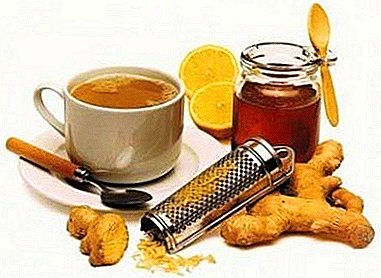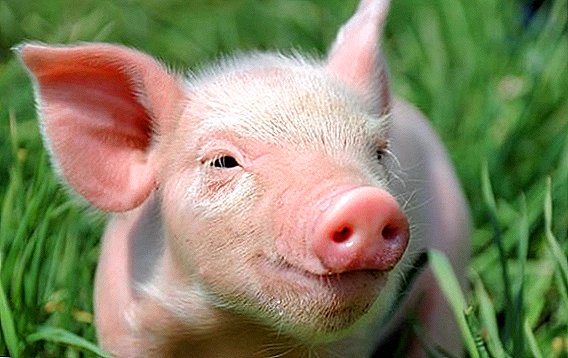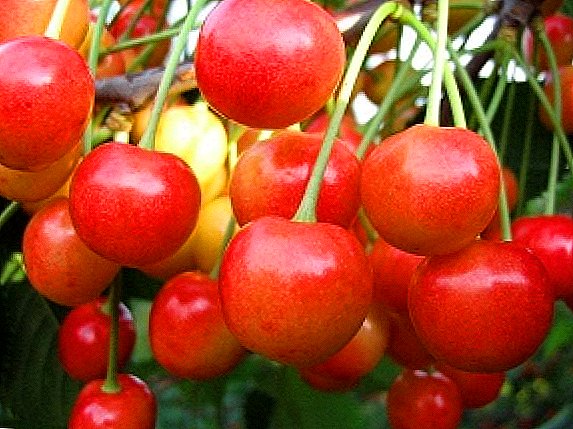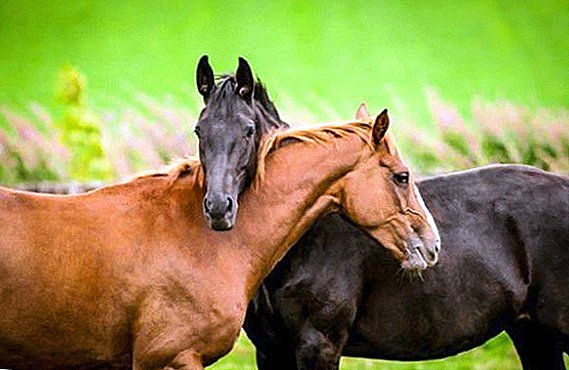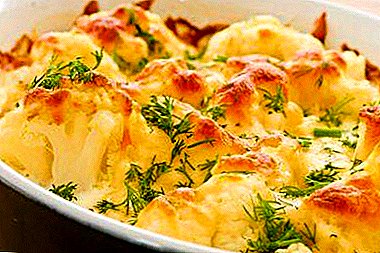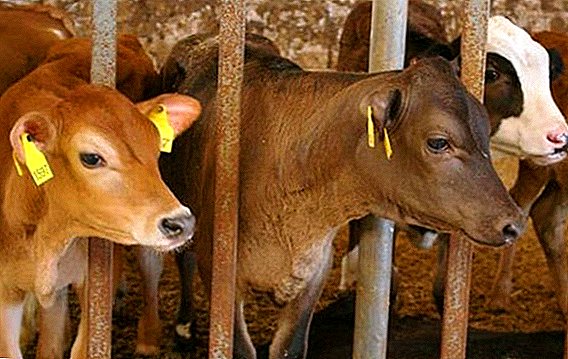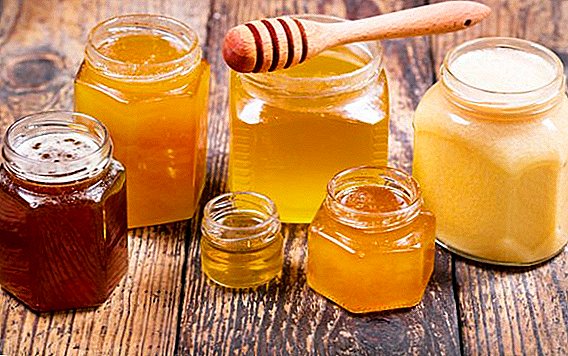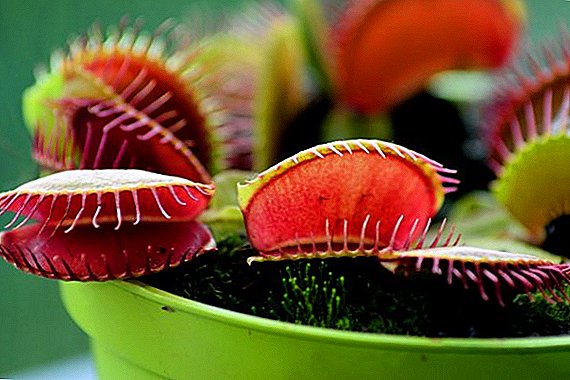 Venus flytrap - amazing plant. Its peculiarity consists in eating small insects, which the flower attracts with its pleasant aroma and beautiful appearance. It is not so easy to propagate a Venus flytrap at home, however, after carefully studying the technology, you can grow a beautiful plant from seeds. From the article you will learn how to do it.
Venus flytrap - amazing plant. Its peculiarity consists in eating small insects, which the flower attracts with its pleasant aroma and beautiful appearance. It is not so easy to propagate a Venus flytrap at home, however, after carefully studying the technology, you can grow a beautiful plant from seeds. From the article you will learn how to do it.
What does a flycatcher look like?
The Venus flytrap or dionea belongs to the herbaceous perennials of the Rosyanka family, which are native to the northern regions of the United States of America. The plant belongs to the category of carnivores, and is equipped with a unique trap-trap, which no other flower in the world has.
Under natural conditions, dionea can grow up to 20 cm in height, in home conditions - no more than 10-12 cm. It has an invisible stalk that is in the soil, from which 4-7 long leaves grow. Each leaf consists of two parts: the lower one is distinguished by a light green color and feeds on light, the upper one is a trap, which is responsible for providing food.  The trap consists of two slam shut doors, on the edge of which there are numerous sharp teeth. In the middle of the traps there are three setae, as well as special glands that secrete juice for digesting food.
The trap consists of two slam shut doors, on the edge of which there are numerous sharp teeth. In the middle of the traps there are three setae, as well as special glands that secrete juice for digesting food.
The activity of a predator plant manifests itself in the summer, when the traps become large enough and acquire a bright maroon color to attract a potential victim. In the cold season, the traps dry up and fall off, and the plant enters a state of rest.
Did you know? Dionei's lifespan under apartment conditions is about 20 years, during which time the plant eats only 3-4 times. With more frequent feedings, the flower dies.
How to plant the seeds of a predatory plant?
Dionei reproduction is possible in three ways: by dividing the bulbs, cuttings or seeds. Experienced growers practice the seed method in the home, as compared to the other two, it is simple and safe for the flower itself. Next, consider how and when to plant the seeds of Venus flytrap.
Season
Experts recommend planting seeds for growing a new plant in early February. After 1-1.5 months sprouts are formed, which with the first rays of the spring sun will be able to undergo natural acclimatization and hardening, which will allow them to take root faster and grow.  Preparation of the acquired seed material should be carried out 2 months before sowing. And you need to collect seeds yourself for a year (8-10 months) before the intended planting, in the spring, during the flowering of Dionei.
Preparation of the acquired seed material should be carried out 2 months before sowing. And you need to collect seeds yourself for a year (8-10 months) before the intended planting, in the spring, during the flowering of Dionei.
Landing capacity
For sowing seeds, it is advised to use small plastic containers with a lid, through which you can easily organize a home mini-greenhouse, or purchase special heated greenhouses. In the absence of such a container, any shallow, wide container, which after sowing works is covered with plastic film or glass, will be suitable.
Important! Breeding is necessary to give a plant that has passed at least one wintering. Young young flower stalks should be removed.
When the sprouts reach a height of several centimeters and form 3-4 full leaves, they dive into separate, permanent pots. It is not recommended to plant the seedlings in disposable cups, since the root system of the plant is fragile and can be damaged with frequent transplantations.
Seed stratification
Seed material for breeding Dionei can be purchased in special stores or obtained in a residential environment from an adult plant, by artificial insemination of a flower. 
To harvest the seeds yourself, you need:
- in spring, in the phase of flower formation, transfer the pollen from one flower to another using a clean brush;
- the pollination event is repeated several days after the buds are fully opened;
- in a month, ovaries form on the plant, and the flower will form a box with 20-30 seeds inside;
- seed material is carefully collected, folded in a paper bag and stored 4-5 months in the refrigerator.
Important! The quality of the seeds can be determined by their appearance: they must be black in color, smooth with a shiny surface.
Mandatory procedure before sowing seeds is their stratification (artificial awakening), which is carried out for several months.
The procedure is as follows:
- seed material is wrapped in cloth, moistened with a solution of any fungicidal preparation;
- tissue with seeds placed in a plastic container, closed with a lid and placed in a refrigerator;
- periodically, the seed container is opened and the tissue is moistened.

Soil and drainage
For sowing seeds, experts recommend applying a mixture of peat, perlite, sphagnum moss and quartz sand. Perlite as a natural material is valued by flower growers for its ability to absorb moisture, retain it and thereby create favorable conditions for seed germination.
Before sowing seed carry out the following activities:
- perlite is soaked in distilled water for 7 days;
- After the indicated time, the peat is mixed with the treated perlite in equal proportions, and one part of moss and sand is also added;
- before mixing, sand is disinfected by calcining it in an oven for 15–20 minutes, at a temperature of + 180 ° C;
- soil mixture is watered with fungicide solution and seeds are sown.
Did you know? In addition to the unique aroma that Venus flytrap attracts insects, the plant can glow blue. This is due to fluorescent radiation.
Sowing seeds
After thorough preparation of the substrate, the procedure of planting seeds is carried out:
- The treated seeds are evenly immersed in the soil to a depth of 0.5 cm, while the distance between them is left at 1.5-2 cm.
- Crops sprinkled with a small amount of substrate, the surface is moistened with a spray bottle.
- Capacity with seeds covered with plastic film to create the greenhouse effect.
- The container is placed in an illuminated place with stable temperature indicators + 25 ... + 28 ° С, where there are no direct sunlight.
- After 3-4 weeks, under all conditions, the first shoots will appear. After the formation of 3-4 full-fledged sheets, the sprouts swoop into hotel containers.
Video: Sowing Venus Flytrap Seeds
Necessary conditions and further care
During the germination of seeds, they need to organize a comfortable growth environment:
- Greenhouse. A prerequisite for the cultivation of sprouts is to provide a greenhouse effect, which is created by covering the container with plastic film. Before the appearance of the first shoots, the film should be periodically removed, aired, and the ground should be moistened with a spray gun. Do not allow the soil to dry out, because the shoots may never appear.
- Lighting. Seed tank is recommended to be installed in a well-lit place, but in the absence of direct sunlight. Light day should be at least 15-16 hours.
- Temperature mode. To germinate sprouts, it is necessary to adhere to temperature indicators of + 25 ... + 28 ° С.
- Transfer. When the first shoots appear, after about 2-3 weeks, the film must be removed. When 3-4 full leaves appear on the seedlings, they are transplanted into separate pots of small size.
Did you know? Dionea was the “favorite” in the home collection of indoor plants of the third US President Thomas Jefferson. The head of state loved to care for the flower and gave him maximum attention. Jefferson managed to get the first seeds only in 1804.
Other breeding methods
Experienced flower growers practice other ways of breeding Venus flytrap: cutting and dividing the bush.
Cuttings
In the spring time for breeding Venus flytrap recommended cutting, the essence of which consists in the following:
- several leaves with a white part are cut off from the socket and the traps are cut off. Material for 15-20 minutes immersed in a solution of any drug designed to stimulate growth;
- prepare the substrate of equal parts of sand and peat;
- prepared, disinfected soil poured in a small layer up to 2 cm in a plastic container;
- cuttings are planted, the soil is moistened with a spray gun;
- the planting is covered with a polyethylene film and placed in a well-lit, warm enough place;
- shelters are regularly removed to prevent leaf rot and mold growth on the ground.
 The grafting process will take place through the gradual withering away of the old sheet and the simultaneous formation of a new outlet. As soon as the seedlings are stronger, they form several full-fledged leaves and form several root processes, they should be transplanted into separate pots. As a rule, the entire grafting process takes 3 months.
The grafting process will take place through the gradual withering away of the old sheet and the simultaneous formation of a new outlet. As soon as the seedlings are stronger, they form several full-fledged leaves and form several root processes, they should be transplanted into separate pots. As a rule, the entire grafting process takes 3 months.Important! Despite the simplicity of the method, it is not recommended to use it often, as the mother flower feels more comfortable when there are a large number of daughter bulbs around it.
Dividing bush
It is best to divide the bush when there are many growing points on the flower, which indicates the aging of the dionei. Carry out the procedure in the spring, during the period of active growth of the flower. 
For this:
- the flower is carefully removed from the pot, the root system is cleaned of the soil;
- divide the bush in such a way that the individual parts receive at least one outlet. As a rule, the separation of the bulbs is carried out fairly easily, however, if they have strongly grown together, then it is necessary to cut them with a sharp, previously disinfected knife;
- The resulting new bulbs are deposited in separate containers and provide care, as for an adult plant.
Learn more about how to grow a Venus flytrap at home.
Venus flytrap - the choice of flower growers who are not afraid of difficulties. The flower is demanding and capricious, it needs special conditions for growing and reproduction. Compliance with the rules of breeding will allow connoisseurs of exotic plants to get a new, extremely beautiful and unusual indoor "predator."



